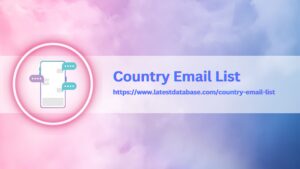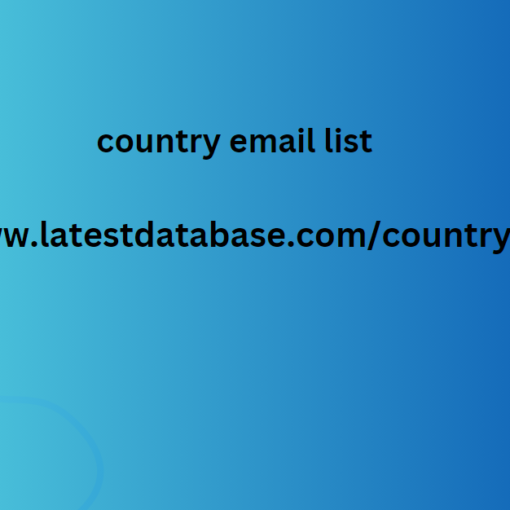However, managing and using customer data is not an easy task. Companies often face significant challenges in collecting, integrating, and managing customer data from multiple, scattered sources. Problems arise when customer data is fragmented within an organization, with different departments storing data in separate silos without communicating with each other.
Challenges in Managing and Using Customer Data
One of the main challenges in customer data management is data integrity and quality. Customer data is often spread across multiple systems, such as sales systems, customer service systems, marketing systems, and social media platforms. This data may be incomplete, unstructured, or unstandardized. In some cases, there is data duplication or inaccuracy that can cloud understanding of customers.
In addition, another challenge is the ability to integrate customer data from various sources. Companies often face difficulties in combining data from their own internal systems, third-party data sources, or even data obtained from digital platforms such as social media. This complex data integration requires a lot of effort and is often time-consuming.
The Negative Impact of Customer Data Fragmentation
Customer data fragmentation has a significant negative impact on businesses. When customer data is fragmented, businesses struggle to get a complete picture of their customers. Without a comprehensive understanding of customer behavior and preferences, businesses cannot deliver personalized and relevant experiences.
In addition, customer data fragmentation also hinders effective marketing efforts. Companies that do not have access to integrated customer data often struggle to perform precise segmentation and efficient targeting. As a result, marketing efforts become less effective and inefficient, with increased costs but diminishing returns.
Introduction to the Importance of Customer Data in the Digital Age
In the digital age of widespread connectivity, customer data has become a highly valuable commodity. Customer data provides insights into customer preferences, needs, and behaviors, allowing companies to make smarter, more strategic decisions. With good customer data, companies can improve the effectiveness of marketing campaigns, increase customer satisfaction, and create personalized, relevant experiences.
Customer data is also the foundation for successful customer experience personalization. With a deep understanding of customer preferences and needs, companies can serve individually relevant content, products, and services to each customer. This can create a strong relationship between customers and brands, increase loyalty, and influence more positive purchasing decisions.
Growing Need for Customer Data Platform (CDP) Systems
The increasing complexity of customer data demands and needs has given rise to a rapidly growing demand for solutions that can address the challenges of managing and using customer data. This is where Customer Data Platform (CDP) systems come in. CDPs are technology solutions that enable companies to collect, integrate, and manage customer data from multiple sources in one unified place.
In recent years, demand for CDPs has grown significantly. Companies recognize the enormous potential of CDPs in improving customer understanding, optimizing customer experiences, and achieving better business outcomes. With CDPs, companies can overcome the challenges of managing complex customer data, better integrate data, and provide deep customer insights.
By adopting a Customer Data Platform (CDP) System, companies can leverage customer data more effectively, deliver personalized and relevant experiences, and make smarter decisions based on a deeper understanding of customers.
What is a Customer Data Platform (CDP) System?
Definition and Basic Concepts of CDP
Customer Data Platform (CDP) system is a technology solution designed to collect, integrate, and manage customer data from various fragmented sources. CDP has a primary focus on deep understanding of customers and providing relevant insights to improve customer experience.
Essentially, a CDP serves as a “single source of truth” that stores complete, integrated, and standardized customer data. By using a CDP, companies can create rich, holistic customer profiles, including demographic data, product preferences, transaction history, online behavior, brand interactions, and more.
Differences between CDP and Other Customer Data Platforms
While there are several other platforms and solutions that focus on customer data, CDPs have key differences that set them apart from other customer data platforms, such as Customer Relationship Management (CRM) or Data Management Platforms (DMP).
First, CDP places a primary focus on customer data as a valuable resource. CDP is specifically designed to collect, manage, and integrate customer data from multiple sources, with the primary goal of improving customer understanding. On the other hand, CRM focuses more on customer relationships and sales process management, while DMP focuses more on collecting and using data for advertising and targeting purposes.
Second, CDPs provide the ability to create rich, holistic customer profiles. By combining data from multiple sources, CDPs are able to produce a comprehensive picture of customer behavior, preferences, and needs. Meanwhile, CRMs and DMPs may only have a certain subset of data or are limited to data collected in a specific context.
Third, CDPs focus on personalizing customer experiences.
With a deeper understanding of customers, CDPs enable companies to deliver personalized and relevant experiences across multiple communication channels. CRMs and DMPs may have certain personalization capabilities, but their primary focus is different.
Architecture and Key Components in a CDP
A CDP consists of several key components that work together to manage customer data and provide valuable insights. Here are some of the key components that typically exist in a CDP architecture:
Data Collection
This component is responsible for collecting customer data from various sources such as internal systems, third-party applications, social media, and others. This data is then sent to the CDP for further processing.
Data Integration
This component is responsible for integrating data from various sources into one unified view. This data integration allows companies to have a comprehensive understanding of customers by connecting related information.
Data Storage
This component is an integrated customer data storage. Customer data is stored in a structured and standardized format for easy access and use.
Data Analysis
This component involves the process of analyzing customer data to generate valuable insights. Using data analysis techniques such as segmentation, predictive modeling, and behavioral analysis, CDPs can identify relevant patterns and trends about customers.
Customer Profiling
This component forms a rich and holistic customer profile based on collected and analyzed data. This customer profile includes demographic information, product preferences, transaction history, brand interactions, and more.
Predictive analytics, or the use of past data to predict future country email list and outcomes, is one of the main tenets of Number Data Marketing. Businesses may forecast client preferences, purchasing patterns, and engagement levels by examining historical trends and behaviors. This information enables them to adjust their marketing strategy. Businesses may maximize returns on investment, reduce risks, and enhance marketing efforts with this predictive method.
Real-time Engagement
This component allows businesses to interact in real-time with customers through various communication channels, such as email, text messages, mobile apps, or social media. CDPs can send personalized and relevant messages based on information contained in customer profiles.
With the combination of these components, a CDP provides powerful capabilities to manage customer data and create personalized and relevant experiences for customers.
Through the use of CDP, companies can leverage the potential of their customer data more effectively, improve customer insights, and optimize the overall customer experience.
Benefits of a Customer Data Platform (CDP) System
Customer Data Platform (CDP) systems have great potential to provide significant benefits for companies in managing and utilizing customer data. Here are some of the main benefits that can be obtained through the use of CDP:
Improving Customer Understanding
One of the key benefits of using a CDP is improving your customer understanding. By collecting and integrating customer data from multiple sources, a CDP allows businesses to see a more complete picture of customer behavior, preferences, and needs. This information can be used to identify valuable trends, patterns, and insights, strengthening your overall customer understanding.
Personalize Customer Experience
CDPs enable better personalization of customer experiences. By leveraging customer data collected in a CDP, companies can serve individually relevant content, offers, and recommendations to each customer. Effective personalization can increase customer engagement, strengthen brand relationships, and result in more enjoyable and meaningful experiences.
Increase Customer Retention and Loyalty
By using CDP, companies can increase customer retention and strengthen loyalty. By understanding customer needs and preferences, companies can take appropriate actions to retain existing customers. CDP can provide insights into purchasing behavior, customer lifecycle, and previous interactions with the brand, allowing companies to develop more effective retention strategies and customize product or service offerings.
Increased Marketing and Sales Efficiency
CDPs can provide increased efficiency in marketing and sales efforts. With a poland contact numbers data of customers, companies can better segment, target relevant audiences, and send personalized, timely messages. Effective personalization can also reduce wasted resources and costs associated with irrelevant campaigns. As a result, companies can allocate resources more efficiently, increase sales conversions, and optimize return on marketing investment.
Supporting Data-Driven Decision Making
The use of CDP also supports data-driven decision-making. By having access to integrated and structured customer data, companies can make more informed and objective decisions. CDP provides deep insights into customer preferences, market trends, and marketing campaign performance. This allows management teams to make better decisions, optimize business strategies, and identify new growth opportunities.
Overall, CDPs provide a variety of benefits for companies in managing and utilizing customer data more effectively. By improving customer insights, personalizing experiences, increasing customer retention, increasing marketing and sales efficiency, and supporting data-driven decision making, CDPs can be a powerful tool for building better relationships with customers and achieving better business outcomes.
Key Features of Customer Data Platform (CDP) System
Customer Data Platform (CDP) systems have a number of key features that enable companies to collect, manage, and utilize customer data more effectively. Here are some of the key features found in CDP:
Collecting and Integrating Customer Data from Multiple Sources
One of the key features of a CDP is its ability to collect and integrate customer data b2b reviews multiple sources. CDPs can connect data from a company’s internal systems, third-party applications, social media, and more. By bringing this fragmented data together in one unified place, CDPs enable companies to have a comprehensive view of their customers.
Rich and Holistic Customer Profile
CDPs enable the creation of rich, holistic customer profiles. By combining data from multiple sources, CDPs can create a complete picture of customer behavior, preferences, and needs. These customer profiles include demographic information, transaction history, product preferences, brand interactions, and more. These structured profiles provide deeper insights into customers and enable better personalization.
Customer Data Analysis and Segmentation
CDPs are equipped with powerful analytics features to process customer data. Using data analysis techniques such as segmentation, predictive modeling, and behavioral analysis, CDPs can identify relevant patterns and trends about customers. The results of this analysis help companies understand customer preferences, predict purchasing behavior, and optimize marketing strategies.
Automatic Settings and Personalized Messaging
Another important feature of a CDP is the ability to automate and send personalized messages to customers. A CDP can combine information from customer profiles with defined scenarios and rules, allowing businesses to send the right message at the right time. These messages can be sent through a variety of communication channels, such as email, text messages, mobile apps, or social media.
Customer Journey Tracking
CDP enables better tracking of the customer journey. Companies can see the interactions and touches customers have with the brand across channels and stages of the customer journey. By tracking the customer journey, companies can understand how customers interact with the brand, identify critical touchpoints, and optimize the customer experience at each stage.
Integration with Other Systems and Open APIs
The last important feature of a CDP is its ability to integrate with other systems and have an open API. CDPs can connect with CRM systems, marketing platforms, eCommerce systems, and more. These integrations allow for seamless data exchange between the CDP and other systems, maximizing the value of customer data and extending the functionality of the CDP with additional features.
With these key features, the Customer Data Platform (CDP) System provides powerful capabilities for companies to better manage, analyze, and utilize customer data. By collecting and integrating data, building rich customer profiles, analyzing and segmenting data, sending personalized messages, tracking customer journeys, and integrating with other systems, CDP provides a comprehensive solution for customer data management.
Implementation of Customer Data Platform System in Various Industries
Customer Data Platform (CDP) systems have broad potential and can be applied in various industries. With its ability to collect, manage, and better utilize customer data, CDP provides significant benefits to companies in various sectors. Here are some examples of CDP applications in several key industries:
E-commerce and Online Trading
In the e-commerce and online commerce industry, CDPs can be the key to success. By tracking and analyzing customer data, e-commerce companies can recognize customer preferences and purchasing behavior. This allows them to send relevant product recommendations, create personalized marketing campaigns, and increase sales conversions. CDPs also help in improving customer experience through better personalization, order tracking, and more efficient customer service.
Banking and Finance
The banking and finance industry relies heavily on a deep understanding of customers. With the implementation of a CDP, financial institutions can integrate customer data from various sources, including bank accounts, credit cards, and other transaction activities. CDPs allow them to create complete customer profiles, track transaction history, and analyze financial behavior. With these insights, companies can offer personalized services, provide relevant investment recommendations, and improve customer satisfaction.
Subscription Services
Subscription services industries, such as video streaming services, music, and digital content providers, can also leverage CDPs to improve the customer experience. By integrating customer data from multiple platforms and channels, CDPs enable subscription providers to better understand audience preferences and behaviors. This allows them to provide targeted content recommendations, create effective retention campaigns, and improve customer satisfaction.
Tourism and Hospitality Industry
In the travel and hospitality industry, CDPs can help companies deliver personalized and memorable customer experiences. By collecting and integrating customer data, CDPs can understand customers’ travel preferences, booking history, and individual needs. With this information, companies can provide relevant destination recommendations, offer special deals, and provide services tailored to customer preferences.
Telecommunications and Internet Service Providers
Telecommunications and internet service providers can also leverage CDPs to improve customer satisfaction and user experience. By integrating customer data from multiple sources, CDPs can help service providers understand user preferences, identify usage patterns, and provide tailored services. This can include offering appropriate subscription packages, recommending service upgrades, and providing better customer service.
Retail and Retail Industry
The retail and retail industry can also benefit significantly from implementing a CDP. By collecting and integrating customer data, CDPs enable retailers to understand customers’ purchasing preferences, transaction history, and spending habits. This information can be used to create personalized marketing campaigns, provide relevant product recommendations, and improve customer retention rates.
Overall, the Customer Data Platform (CDP) System has broad potential and can be applied in various industries. With its ability to collect, manage, and better utilize customer data, CDP enables companies to improve customer experience personalization, understand customer preferences, and improve customer satisfaction across various industry sectors.




